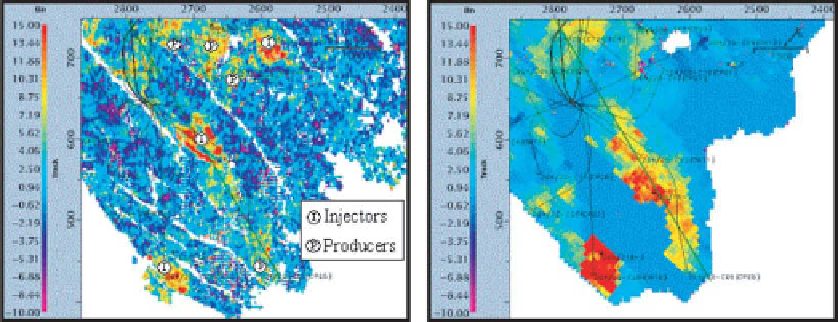Geoscience Reference
In-Depth Information
in the near-surface velocities in the land case. Timing differences of as little as 2 ms
can give significant residual energy in the difference plot. Root-mean-square energy
balancing using a smoothed time and space variant scalar is usually required, even
if the baseline and monitor survey were nominally acquired in an exactly identical
way. Spectral matching between the two surveys will also, in general, be required to
ensure that they both have the same frequency content. Finally, differences in seismic
phase must be removed. A phase difference of as little as 15
◦
will be significant for
the difference plot; such small phase shifts are typically too small to be apparent to the
unaided eye, and rely on software for their detection and correction.
8.5
Examples
process of comparing time-lapse results with predictions from a reservoir simulator.
Figure 8.4
shows the time-lapse difference for both real and synthetic data over the
Schiehallion oil field in the West Shetland area. The main sources of time-lapse response
are pressure and saturation effects near the wells. Near the water injectors, reservoir
pressures have increased from 17 MPa to 41 MPa, which causes brightening on the
seismic. Near producing wells, the pressure drop causes an amplitude decrease as long
as the pressure is still high enough for gas to remain in solution; once the pressure is low
enough for free gas to be present, the amplitude brightens. All these effects were visible
on both the real and the synthetic data, and detailed examination of the real data allowed
the mapping of pressure compartments separated by sealing faults, some of which are
too small to be resolved by conventional imaging. Another example is from the Maui
gas field in New Zealand. The reservoir interval contains laminated sands and shales,
Fig. 8.4
Schiehallion field: difference in amplitudes between pre- and post-production for both





